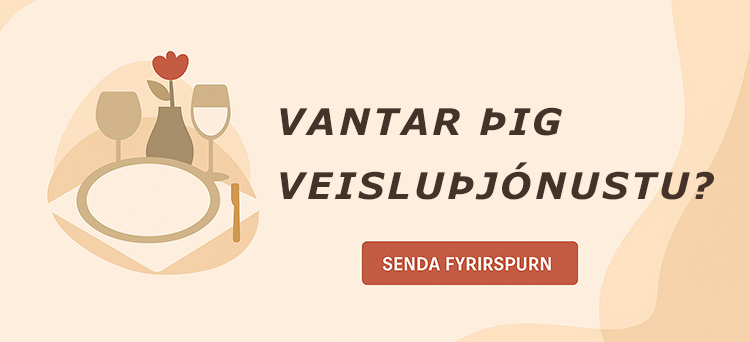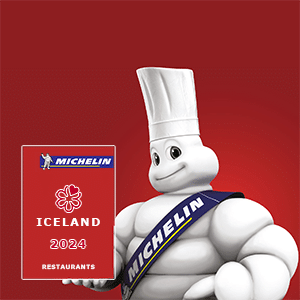Lifid
Fine-tuning Washington's wines
Last month’s column on the recent success of wines made from grapes grown in eastern Washington state’s high desert generated a large amount of reader feedback. Most questions ran along the lines of, „If the Washington desert is such a great place for viticulture, then why weren’t they growing grapes there before?“ Many readers also asked for recommendations and sources for Washington wines in Japan. A few even pleaded for the identity of the winery that recently received two perfect 100-point scores from Robert Parker.
Fear not — the answers to all your questions can be found here.
To recap, recurring floods at the end of the last Ice Age covered eastern Washington state with layers of the silty soil that grapevines love. Prior to the introduction of irrigation, however, viticulture was all but impossible (the desert receives just 20 cm of rain per year, versus nearly a meter on the Pacific side of the Cascade mountain range).
Even after the Columbia River was tapped to irrigate large parts of the 4.4-million-hectare Columbia Valley, farmers focused on easy-to-grow wheat and then higher-value cherries and apples.
Washington’s real grape-growing insight came from the research institutes of France and California. For as long as wine has been made, certain vineyard sites have been known to consistently outperform their neighbors, and this was thought to have been due to a combination of microclimate and some kind of magical elements in the soil (cue French chorus of „terroir, terroir“). What scientists have come to understand, however, is that any remaining moisture in the soils of the best sites naturally runs out in the weeks prior to harvest, sending the vines into a sort of panic-mode in which they channel their entire remaining energy into grape development.
Washington’s visionary winemakers, many of whom had fled high land prices in California and France, realized that the state’s high desert offered inexpensive land with just the right soils and climate. More importantly, since it was so dry, they could in a sense play God, re-creating the naturally occurring water-stress profiles of some of the world’s top vineyards with the flick of an irrigation switch.
While the desert environment is Washington’s vinous raison d’e^tre, it is also the state’s Achilles’ heel. The area is periodically subjected to devastating winter freezes, and its early winemaking history is littered with accounts of heartbreak.
Frostbitten growers were naturally reluctant to risk putting in more than a few vineyards in the state’s equivalent of Mount Everest’s „death zone.“ But once they realized the potential fruit quality that deft use of deficit-irrigation techniques could produce, and, more importantly, saw the prices that these types of premium grapes began to attract in the early 1990s, the risk-reward ratio started to look very attractive.
The key was to implement a number of winter-kill minimization techniques, such as locating vineyards on slopes, so that cold air would drain away; growing dual-trunk vines, so that if one died, the other could take over; and burying „sucker shoots“ in the ground before winter, so that if the main vine died, they could be quickly unearthed and trained to seamlessly take over.
While these extra efforts weren’t cheap, the results so far have been spectacular, with Washington wines winning accolades in all major wine publications, and vineyard plantings skyrocketing from just over 4,000 hectares in 1993 to more than 12,000 just 10 years later.
So where should a wine lover new to Washington state begin?
The most commonly found geographical description is „Columbia Valley,“ a regional designation encompassing all grape-growing areas of eastern Washington state. Within this designation, however, an increasing number of sub-appellations are appearing, including such poetically named areas as Horse Heaven Hills, Rattlesnake Hills, Red Mountain and Walla Walla.
There are seven such sub-appellations, and more planned, leading to no small amount of confusion among first-time buyers of Washington wine. However, on a recent weeklong trip through Washington state, time and again the wines we preferred turned out to have been from Walla Walla.
In particular, that area’s Syrahs had wonderfully sublime grapefruit and white pepper characteristics, and didn’t suffer from the vegetal or overly tannic notes sometimes found in other areas’ wines. If Washington aims to add to the pantheon of such classical pairs as Napa Cabernet or Dry Creek Zinfandel, we’d definitely nominate Walla Walla Syrah.
We also found many wines from other parts of Washington that were compelling, but, as with anywhere else in the wine world, they tended to vary on a winery-by-winery basis and required judicious use of the tasting glass.
Fortunately, Tokyo-based wine lovers are in luck, as a recent swing through the Dean & Deluca store in Shinagawa Station (next to the shinkansen entrance) turned up a selection of bottles from three top-tier producers.
Eroica is a joint venture between Dr. Ernst Loosen, one of the most famous Riesling producers in Germany, and Washington’s Chateau Ste. Michelle, the winery that many believe to be the largest producer of Riesling in the world. The 2004 Eroica Riesling (3,570 yen) exhibited a wonderful combination of lemon, pear and mineral notes, and had enough residual sugar to nicely match the green curry we paired it with at a recent dinner.
One of our favorite Washington wine personalities is Charles Smith, a bear of a man who could easily be mistaken for a heavy-metal roadie. He actually managed rock bands in Scandinavia for a decade before relocating to Walla Walla to start K Vintners in 1999. While Viognier can often be overly floral and heavy in the mouth, the 2004 K Vintners Viognier (3,780 yen) was a study in sophisticated restraint. A wafting scent, which has been described as a combination of passion fruit, Chanel No. 5 and star anise, floats above a solid alkaline finish, making this, as Charles said, „a feminine wine, but like that of a woman who definitely knows what she wants.“
Among the reds, we tried two offerings from acclaimed Walla Walla producer Dunham Cellars. Winemaker Eric Dunham, who cut his teeth as assistant winemaker at Walla Walla’s L’Ecole No. 41, focuses mainly on high-end Syrah, but he also makes a more accessible blend called Three Legged Red, named after the winery’s canine mascot — who came away a leg short after a run-in with a pit bull. While we find most „critter wines“ to be vacuous in both style and taste, the 2004 Three Legged Red (3,465 yen) was a juicy Cabernet/Syrah/Merlot blend that showed plenty of blowzy fruit and tannins, making it a perfect barbecue red. The 2003 Dunham Syrah (7,875 yen) meanwhile shows what Washington can do best — a powerful concoction of dark fruits, creamy oak and creme de cassis, but with enough bright acidity to keep this refreshing, even after multiple bottles.
In addition to being available at the Dean & Deluca’s Shinagawa Station outlet, the above wines can also be ordered directly from specialist Washington importer Orca International ( www.orca-international.com ).
And finally — what were the perfect Parker 100-pointers? None other than the 2002 and 2003 Quilceda Creek Cabernets, both of which were available until just a few weeks ago at Nissin in Azabu Juban. While these may be gone for good, wine lovers would be well advised to keep exploring, as Washington state is likely to continue delivering many more pleasant surprises in the future.
Send questions to [email protected]
Source: The Japan Times

-

 Viðtöl, örfréttir & frumraun5 dagar síðan
Viðtöl, örfréttir & frumraun5 dagar síðanÍsland tók yfir eldhúsið á VOX þegar Sævar Lárusson og Rúrik mættu til leiks
-
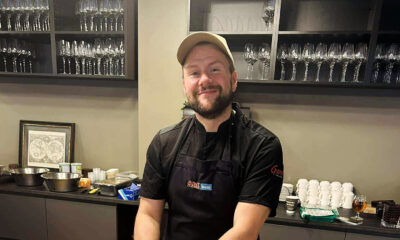
 Nýtt bakarí, veitingahús, fisk- og kjötbúð og hótel3 dagar síðan
Nýtt bakarí, veitingahús, fisk- og kjötbúð og hótel3 dagar síðanSushi staðurinn Majó flytur starfsemi sína í Hof á Akureyri
-
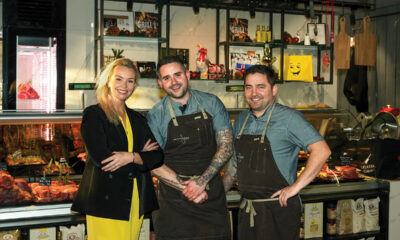
 Viðtöl, örfréttir & frumraun2 dagar síðan
Viðtöl, örfréttir & frumraun2 dagar síðanMeistarakokkar færa sælkeramat í hillur Krónunnar
-
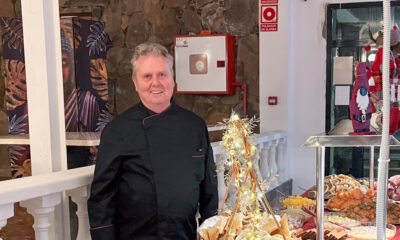
 Viðtöl, örfréttir & frumraun4 dagar síðan
Viðtöl, örfréttir & frumraun4 dagar síðanKristján Örn matreiðslumeistari bauð upp á glæsilegt jólahlaðborð á Gran Canaria – Myndir
-

 Nýtt bakarí, veitingahús, fisk- og kjötbúð og hótel4 dagar síðan
Nýtt bakarí, veitingahús, fisk- og kjötbúð og hótel4 dagar síðanNýtt bakarí í undirbúningi á Öskjureitnum á Húsavík
-
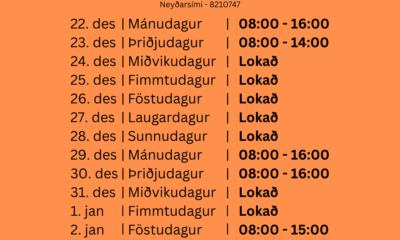
 Markaðurinn4 dagar síðan
Markaðurinn4 dagar síðanRMK heildverslun: Opnunartími yfir hátíðarnar
-
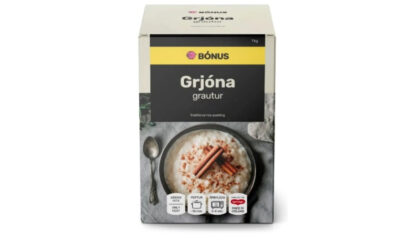
 Frétt5 dagar síðan
Frétt5 dagar síðanAðskotahlutur í Bónus grjónagraut – Matvælastofnun varar við neyslu
-

 Keppni2 dagar síðan
Keppni2 dagar síðanCoffee & Cocktails hreppti 1. sætið í Old Fashioned keppninni


